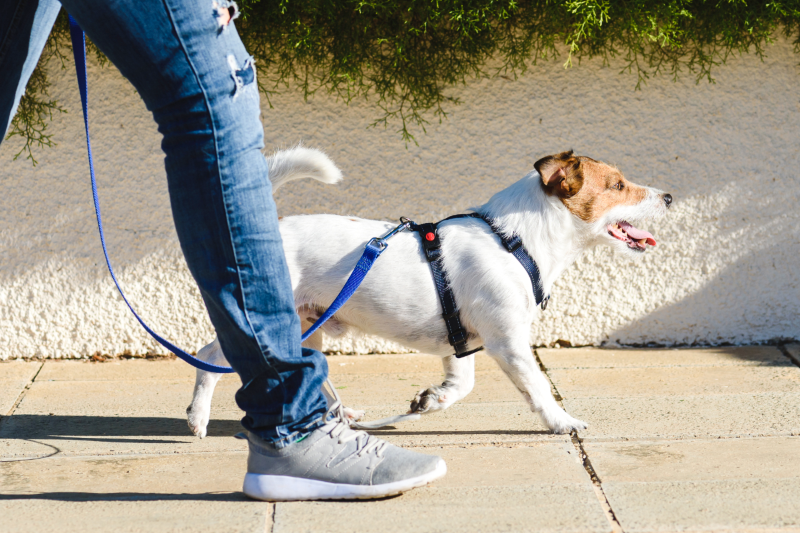A walk with your furry friend on a sunny day can feel like the perfect bonding moment, but as pet parents, we often overlook one significant detail — the scorching hot pavement under our pets’ paws. If you want to get the most out of spending time outside with your pet, it’s important to know how to keep them safe from dangers like hot pavement.
It’s commonly thought that the pads on dogs’ and cats’ feet can handle any surface, but the reality is a stark contrast. Our pets’ paw pads are actually quite sensitive and can be seriously injured by hot asphalt or pavement during the warmer months. Here are a few things to know that will help you to keep your pet’s paws safe from hot pavement and other potential dangers.
Can Animals’ Paws Burn on Hot Pavement?
The short answer is, yes. Just as human skin is susceptible to burns from hot surfaces, so too are the pads on our pets’ feet. Hot pavement can burn a dog’s or cat’s paws, and the risk increases significantly on sunny summer days.
If the pavement feels hot to your touch, it’s probably too hot for your pet. An easy way to check is to press your hand against the pavement for 7-10 seconds. If it’s too hot for you to keep your hand on, it’s too hot for your pet’s sensitive feet.
Since you probably wear shoes when outside with your pet, it’s important to know the signs that your pet’s paws are in pain from hot pavement. These include limping, licking, or chewing at the feet, pads that are darker than usual in color, or visible blisters and damage to the paw pads.
Protecting Your Pets’ Paws from Other Dangers
Apart from hot pavement, other hazards like sharp objects, chemicals, and ice can also cause harm to your pet’s paws. Checking your pet’s feet for cuts, sores, or foreign objects lodged in their pads after every walk may seem time-consuming, but it can save you and your pet time, money, and pain in the long run. Likewise, rinsing their feet after walks to remove any chemicals or salts used on roads and sidewalks that can dry out their pads is also helpful.
Using paw balm can help keep your pet’s feet moisturized and less prone to cracking and damage. Protective gear like a pair of booties is also a great option, but it might take some time for your pet to get used to them.
The Risk of Paws on Hot Pavement — Dogs vs. Cats
While both dogs and cats are susceptible to paw pad burns from hot pavement, dogs are at a slightly higher risk. This is primarily because dogs are more often walked outside, making them more likely to come into contact with hot pavement.
Cats, being more independent, are usually better at avoiding uncomfortable surfaces, but that doesn’t mean they’re completely safe. Regardless of your pet’s proclivities, it’s important to be aware of the risks and take the necessary steps to protect them.
Know Your Pet with Orivet
Understanding your pet’s unique needs is fundamental to their health and happiness. To help you provide outstanding and personalized pet care, Orivet is committed to providing you with leading DNA testing. With actionable insights and a 360-degree understanding of each pet, you can choose better matches, make smarter investments, and raise happier, healthier animals down through the generations.
With these actionable insights, you can make smarter decisions regarding your pet’s safety, understand potential breed-specific health concerns, and contribute to raising a happier, healthier companion. It’s all about using knowledge to enhance care!
For more information on Orivet’s easy and affordable genetic testing, contact our team today!

